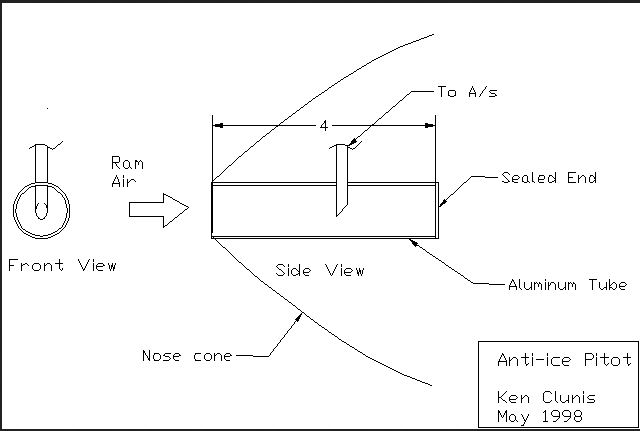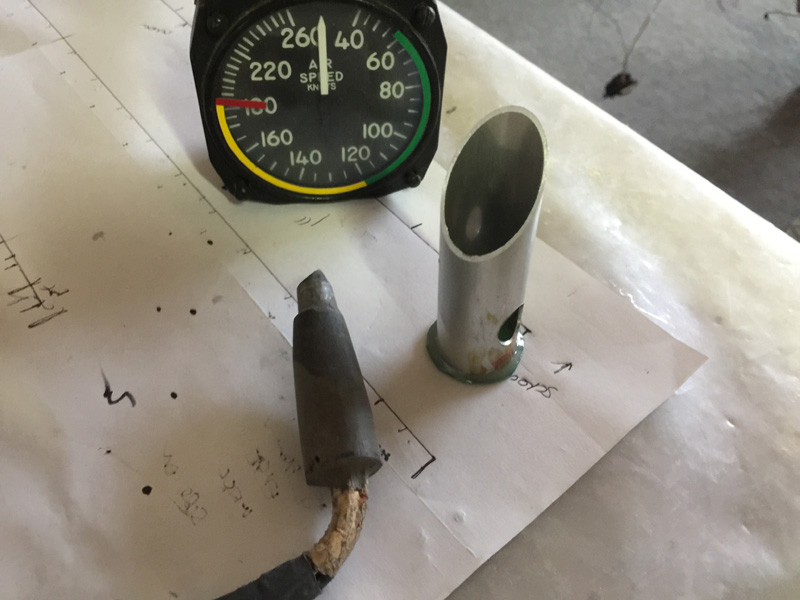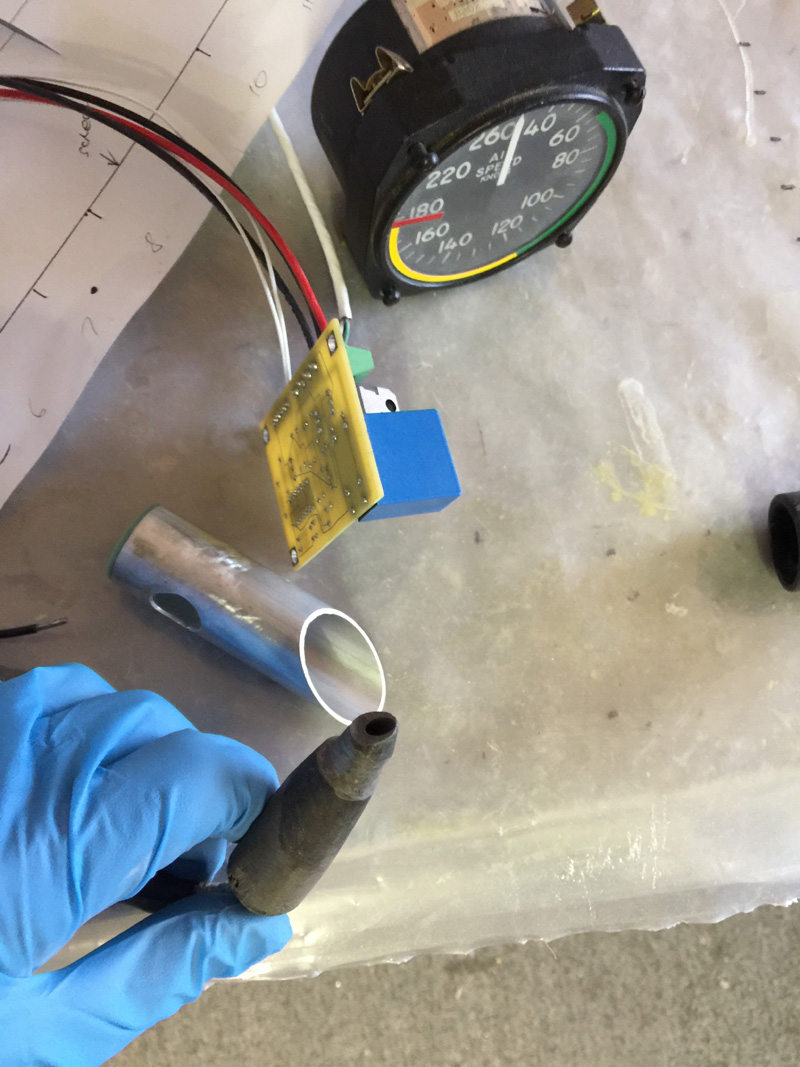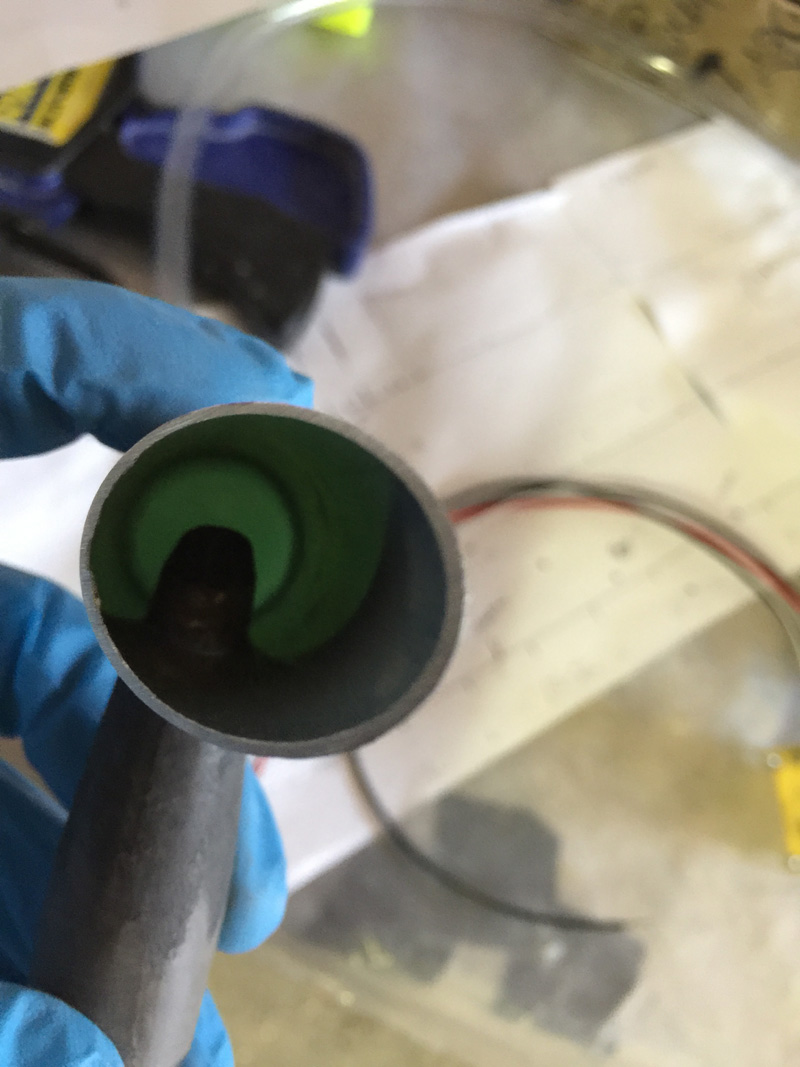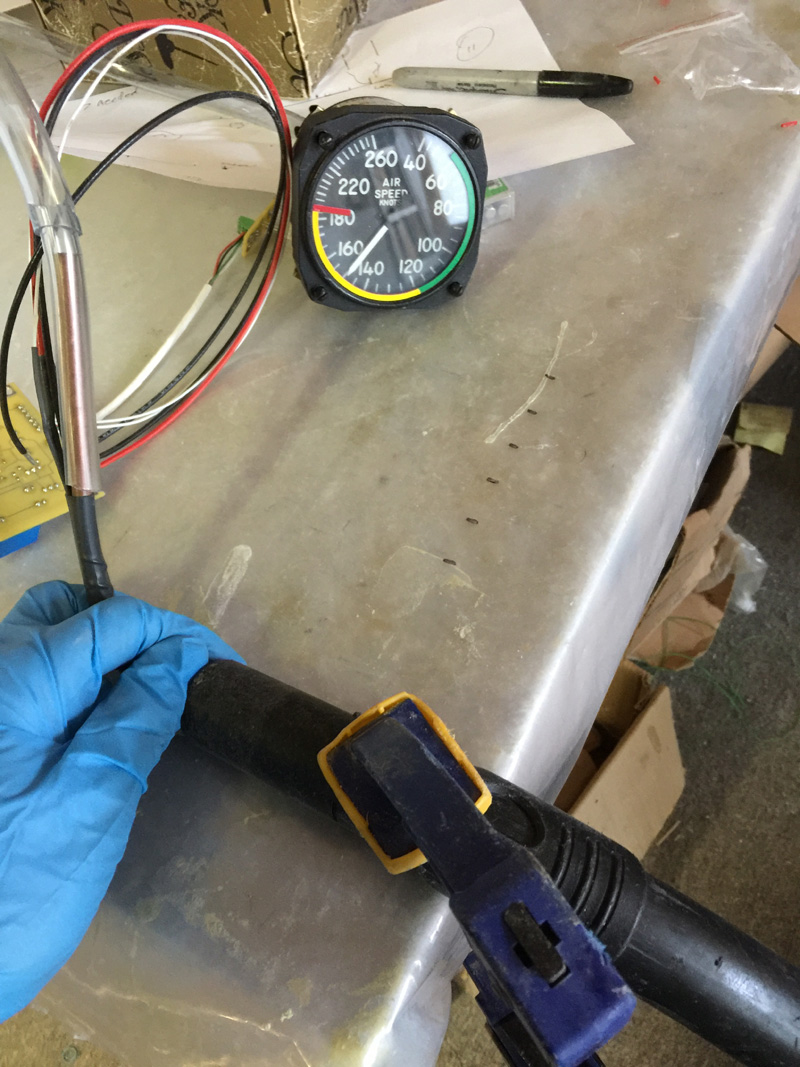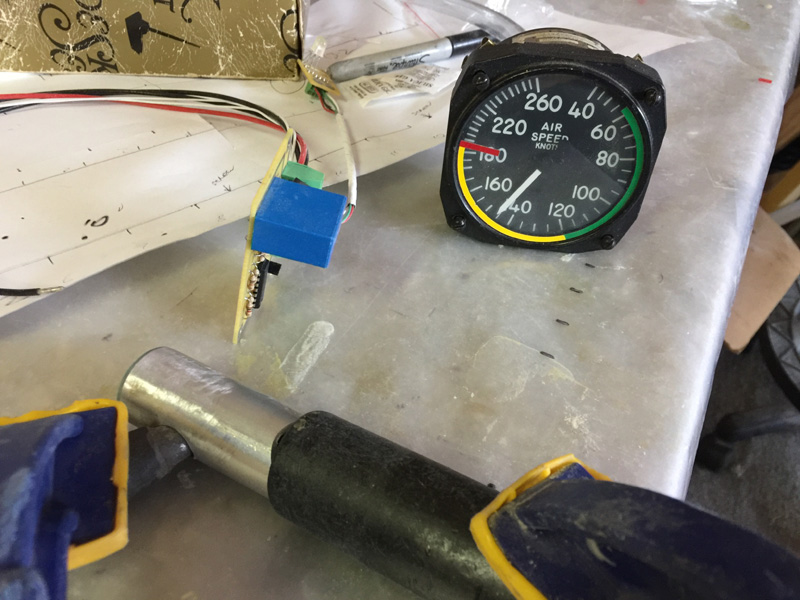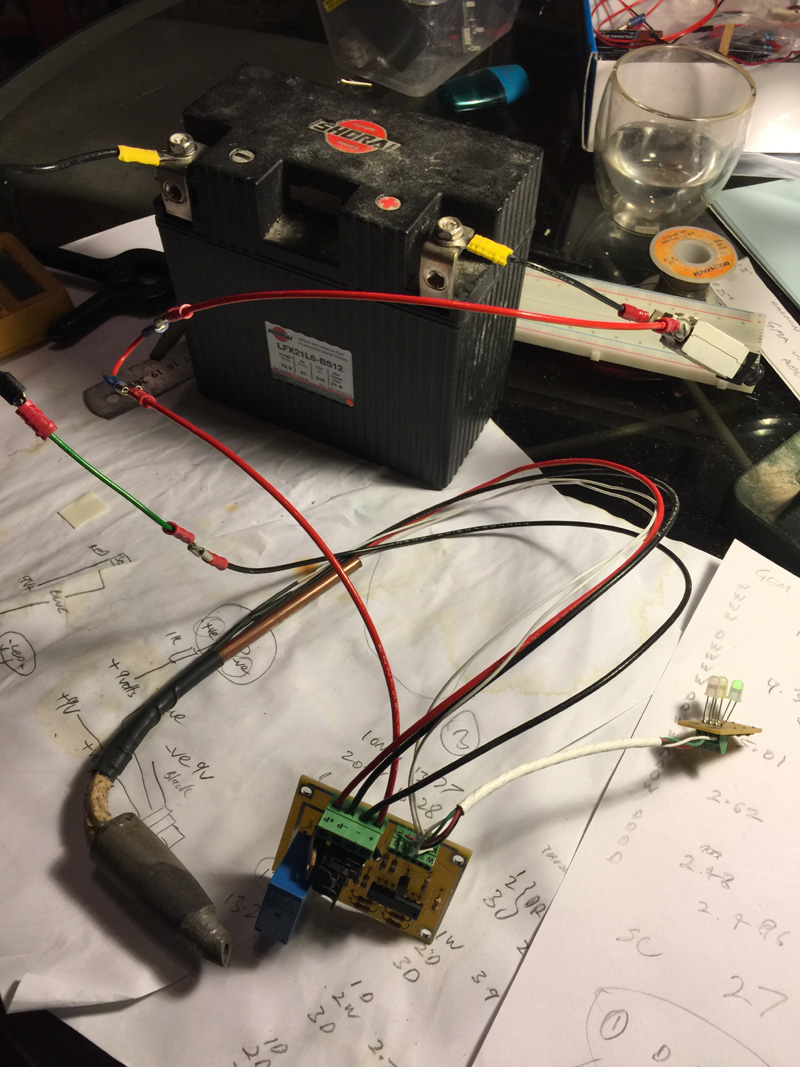| Date: 07-25-2018 | |
| Number of Hours: 4 | |
| Manual Reference: 13-10 |
Finally the pitot installation. Yaaaa!! I have been dithering about this for years. Yes I need a heated pitot for IFR flying and the issues have been where to put it because my light is in the way. I also wanted to use an anti ice glider type but there is no room!
Here’s the concept. Nothing sticking out of the nose. The pickup tube faces the back wall too. The opening is so large that it is unlikely that ice will form over the whole thing. IF the pickup tube, the pitot itself, does ice up then this part is heated in my take on this old idea.
Here’s my version. I’ve had to make the main tube a lot shorter than 4″ AND it is not exactly in the middle point of maximum pressure in the nose. It will go slightly above that so that it clears the main front light. The angle is to fit the curve of the nose just above center. It also give the tube a very slight incline which will tend to allow any melted ice to dribble out. Probably over my light! That said, the light in that area also introduces a bit of heat.
I have ‘modified’ the pitot to fit into a hole in the side of the tube. Similar to the glider pitot design. So this excellent heated pitot I have butchered to fit.
I was given mine by the manufacturer which I am very grateful for and I owe them some installation pics. You can get details here if you want one. Gretz Aero GA-1000 Heated Pitot tubes. The electronics sense when the pitot is cold and apply heat. When it warms up the heat is removed so its not pulling the big amps all the time if its on like the old school type.
I’ve made a cap for the back of the tube out of Garalite and epoxied it in place. It has a slight step which greatly increase the gluing surface and the time it took to make. This pic shows how the pitot will sit in the tube.
I did some more testing to confirm that the tube idea was a go. Again the shop vac came into play. It sucks or blows! Very handy.
I tried various configurations with and without the tube. Enough to say having the tube didn’t seem to make much difference which is what I wanted to see. It is not very accurate testing but I’m happy enough to move forward with the concept. If this whole thing is an epic fail I’ll go a Garmin heated pitot placed under the canard. I hope it doesn’t come to that!
Here’s a bit of due diligence. The unit comes with a three LED row that indicates the units function. I started with a cold pitot which was quickly heated up showing the middle light and then the green light came on and the heat was turned off.
So I haven’t broken anything and its good for installing in the plane. You might notice I have a fuse on the power supply. That was pointed out by my build buddy in the USA, Wade Parton… after I told him I had ‘let the smoke out of the wires’ on some other testing when I hadn’t bothered with a fuse. Hey it was only 12 volts …WRONG! Yes a fuse on all my test rigs has become mandatory. The little bit of smoke was …painfully expensive.

